 Central Heating Installation Cost Guide a Complete Breakdown (uk)
Central Heating Installation Cost Guide a Complete Breakdown (uk)
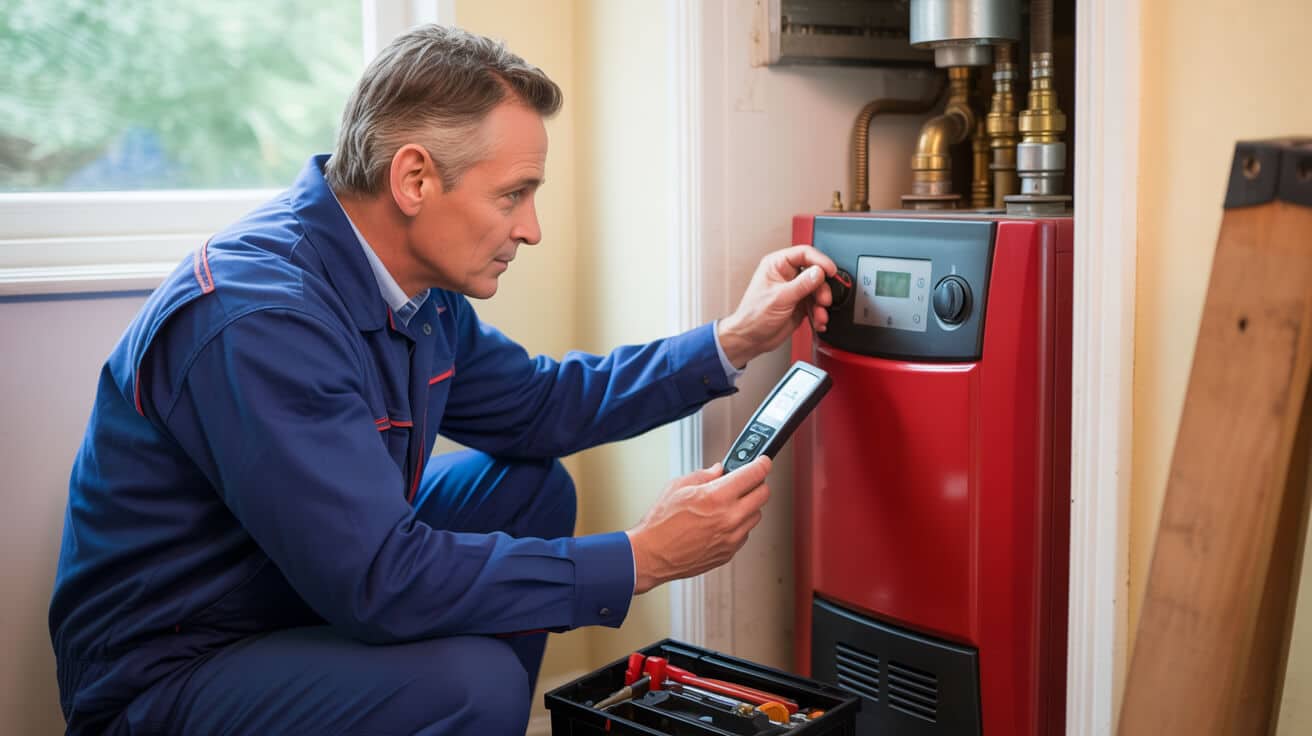
How Much Does a New Central Heating System Really Cost in the UK?
When you start weighing up the expense of a new central heating system, you’re not just shopping for a price—you’re buying clarity, control, and long-term certainty. Whether you’re a homeowner wanting warmth without surprise, a landlord stressing over compliance, or a commercial property manager juggling budgets, there’s no single price tag that fits the entire UK property landscape. The numbers range from £3,500 to over £12,000—but the real question is: what pushes those costs up or down, and how do you make sure you’re protected against hidden risks and regulatory slip-ups?
A transparent heating quote is more than a number—it’s insurance against spiralling surprises that blow up months down the line.
Typical UK central heating installations cost between £3,500 and £7,000 for homes. Larger, multi-zone or light commercial systems can run £7,000–£12,000 or more (greenmatch.co.uk, tsgas.uk). This bracket isn’t random: it reflects factors like square footage, system design, regulatory compliance, and—most of all—the professionalism and documentation standards of your installer.
Chasing the cheapest number looks smart right up to the point where it leaves you cornered. Skimp on certified labour, skip the paperwork, or accept a fuzzy quote and a few months later you’re explaining fines to tenants, chasing lost rent, or arguing with insurers after a breakdown.
Here’s how it usually unravels:
- Size and complexity: Properties with extra radiators, multiple zones, or awkward layouts cost more—because more labour, pipework, and precision go in.
- Boiler selection: Your property’s demand (and future plans) decides if you need a combi, system, or conventional boiler. Choose wrong and you pay twice: once for the instal, again each month on the bills.
- Compliance is a must, not a ‘nice-to-have’: If your installer isn’t Gas Safe (for all gas work) or G3 qualified (for unvented cylinders), you’re on the hook. Insurance, warranty, and even legal standing can vanish.
- Detailed quoting wins every time: Pro installers give you granular, line-by-line quotes up front. Every fixture, fitting, and schedule is logged—giving you cost clarity, escalation control, and proof if problems arise.
As you continue, you’ll see that smart central heating investment isn’t about bargain hunting. It’s about understanding the real levers behind UK pricing and demanding the level of transparency and certification that future-proofs every property in your care.
What Factors Drive Your Central Heating Installation Price?
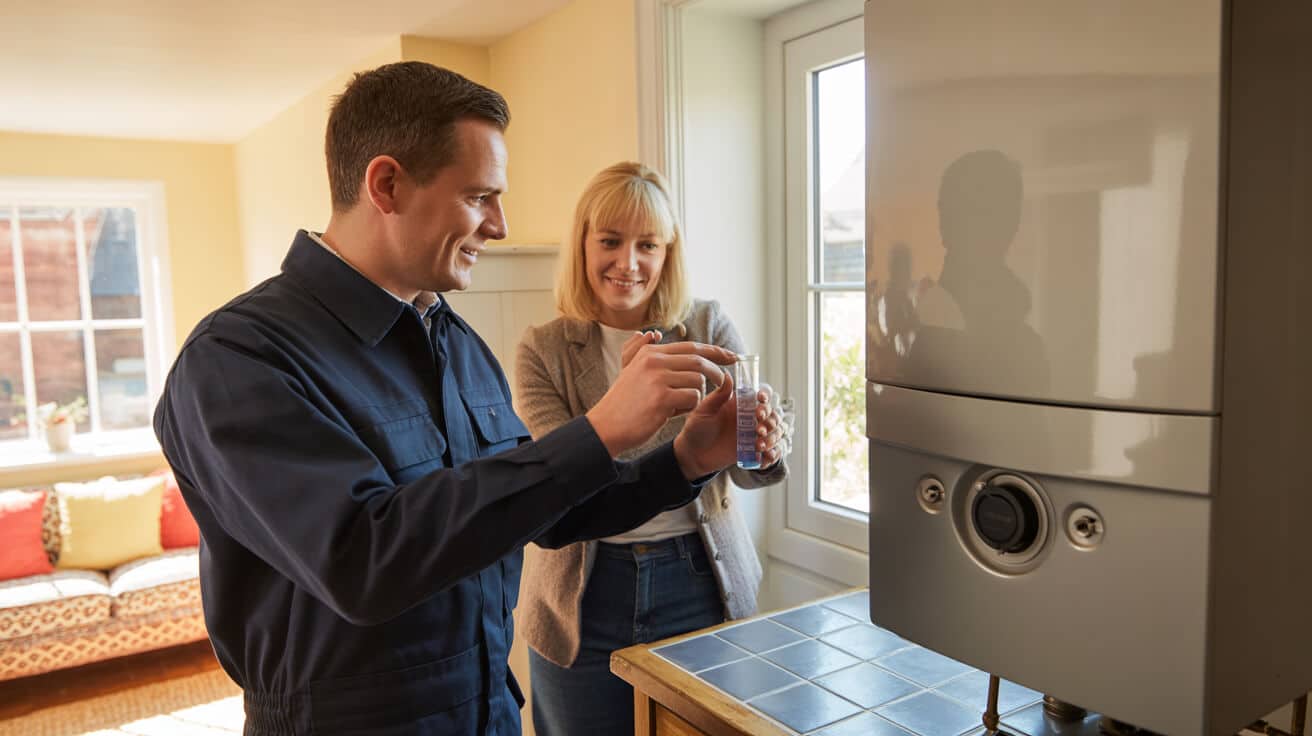
The figure at the end of a heating quote feels like the headline, but the underlying calculations are all about matching a complex technical solution to your building’s personality, regulatory obligations, and long-term expectations. If you’ve ever wondered why your neighbour’s instal came in £2,000 lower (or higher) than yours, this is where the root causes sit.
How Property Type and Size Shape the Cost
A one-bedroom flat with six radiators and direct pipework sits near the floor of the range. These jobs typically fall under £4,500. Scale that up to a three- or four-bedroom house needing a dozen rads, a new cylinder, and copper re-piping, and you enter the £4,000–£7,000 zone (tsgas.uk). Complexity costs: multi-floor layouts, hidden legacy pipes, and awkward plant rooms demand extra hours and skill.
More ambitious: HMOs, older mansions, or commercial sites often require zoning, smart controls, larger boilers, or cascaded systems to meet modern efficiency and compliance obligations. Every added layer isn’t a luxury—it’s tailored comfort and regulatory coverage. But every customization drives both material and expert labour upward.
The Boiler: Budget Saver or Budget Eater?
Combi boilers shine in smaller homes, delivering hot water on demand, no space-hogging cylinder, and a rapid fit time. Upfront costs stay low. System or conventional (regular) boilers, on the other hand, step up for high-demand households or those wanting showers, baths, and towel rails running simultaneously. These units plus an unvented cylinder and new controls can add £500–£1,500 to the base cost.
Every new boiler must be installed and registered by a Gas Safe engineer; moving to or replacing an unvented cylinder requires a G3 certificate—miss either and you place warranty, resale, and insurance at risk.
Controls, Radiators, and Smart Upgrades
Scope creep often starts here. Expect questions:
- Are TRVs (thermostatic radiator valves) listed for each radiator, or did your quote revert to manual controls?
- Does the quote specify smart stats—Nest, Tado, Hive—or basic timers?
- Any mention of upgrading legacy pipework or tackling hidden corrosion, insulation, or scaling in older homes?
Expect smart controls to add £300–£600, but great ROI: up to £180/year in running cost savings (checkatrade.com). Swapping out tired or poorly laid pipework can add £700–£2,000. It pays to clarify every term up front.
Labour is at least 30% of any total. Professional quotes break out hours, day-rates, parts, and contingency. You win by seeing under the hood.
There’s no standard instal—every home asks its own questions. A real expert answers those, not just the brochure specs.
What Should Be Included in a Robust Heating Quote?
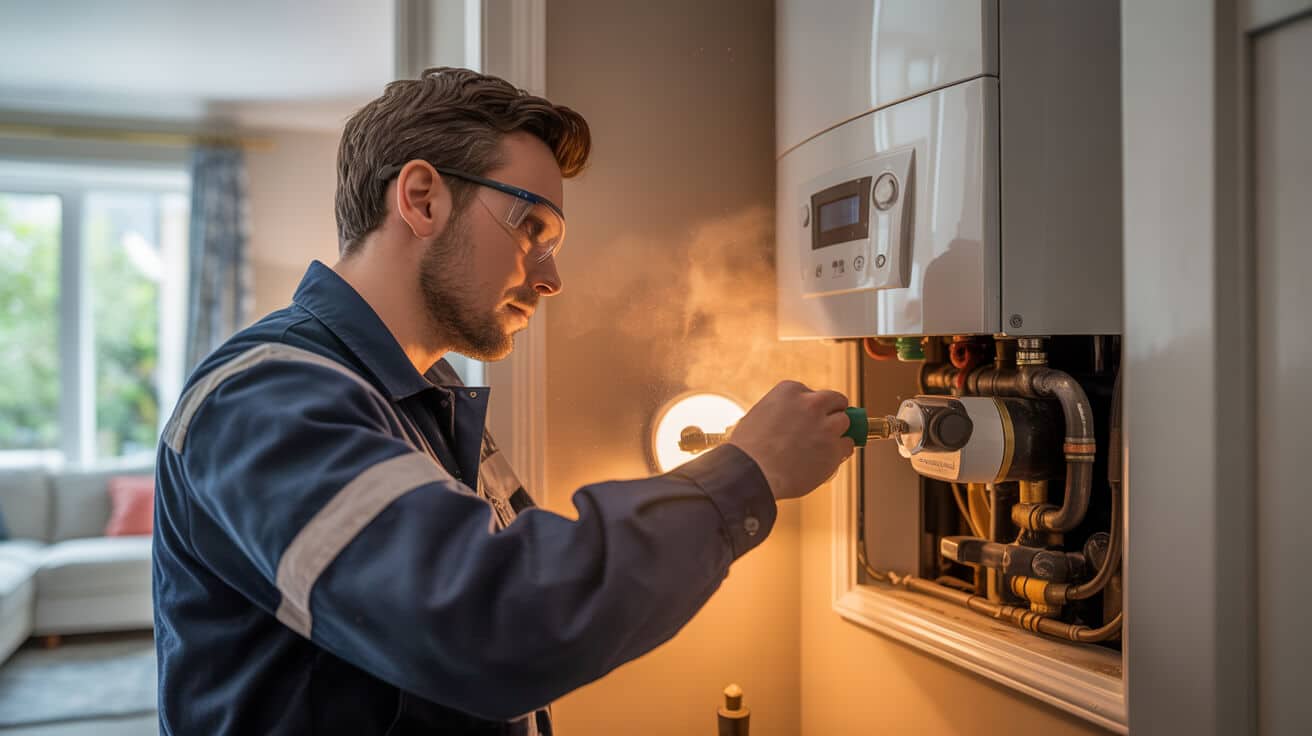
A quote isn’t paperwork. It’s the difference between ending up with a fully documented, compliant, and insurable asset—or a future complaint file. Before you sign, make sure your quote settles every source of friction and confusion, especially hidden variables and legal touchpoints.
Run Your Quote Against This Checklist
- Boiler brand, model, and output: — All spelled out with ErP (energy rating) shown. Gas Safe and G3 credentials declared.
- Radiators, valves & extras: — Each listed line-by-line: size, valve type, towel rails, smart control points.
- Pipework and fitting detail: — Where “new for old” upgrades or retention happen, specify room by room.
- Labour, VAT, and “extras”: — Work hours, VAT inclusion, charge-out rates explained. No “extras” left floating on later invoices.
- Contingency and access: — Who patches up walls, ceilings, floors after pipe re-routing? Get it in writing.
- Certification included: — Full Gas Safe, G3, WRAS, Building Control sign-off as explicit line items.
- Warranty, logbook, and support: — Names, numbers, handover documents, and all digital/physical records up front.
Landlords and property managers: demand CP12 (Gas Safety) handover packs, Schedules of Rates for contract work, and asset logs for every property.
Your installer’s paperwork is as important as their pipework. Flimsy documentation kills asset value and invites insurance or legal nightmares.
What Legal Requirements Must Your Installer Meet?

Central heating work in the UK sits inside a strict legal framework. If your installer can’t show certificates, you’re the one holding the risk—be it fines, invalid insurance, failed property sales, or unrentable flats when inspections arrive. It’s never just a formality.
Compliance Obligations for Every Property Category
- Gas Safe Register: No gas boiler or alteration without verified Gas Safe credentials.
- G3 registered installer: Essential for unvented hot water cylinder work (including upgrades/renewals).
- Building Regulations Part L and G: Every relocation, radiators-to-pipe upgrade, or controls overhaul must be Building Control notified—often via Gas Safe self-certification.
- WRAS/WaterSafe: Only approved pipes and fittings for potable supply; unapproved parts = liability for contamination.
- CP12 for Landlords: All rental properties need annual gas safety certification.
Professional heating firms guarantee you receive every single item, properly documented, before final payment clears. Every missing or fudged step is a potential compliance bomb—especially for landlords and agents facing repeat audits.
A missing compliance sheet isn’t a paperwork gap. It’s a direct financial, legal, and asset-value risk.
What Are the Pitfalls of Cheap Central Heating Quotes?

Buzzy ads and bargain promises aren’t just misleading—they’re dangerous. The lowest quote rarely means the lowest total cost. Every year, owners discover “budget” instals unravel as remedial works, urgent repairs, or compliance failures pile up costs far beyond the headline invoice.
The Hidden Traps Behind Bargain Instal Quotes
- Insufficient survey: — Skipped crawlspaces or boxed-in pipes? You may pay extra once “out of scope” repairs pop up mid-job. Demand a documented full survey.
- Ambiguous part lists: — Beware “as found” or “where needed” language on pipe and radiator replacements. Modern, efficient systems push legacy weak points to failure, fast.
- Missed power-flushing and inhibitor: — Some cut-price firms skip critical cleaning steps, risking sludge build-up, inefficiency, and breakdowns.
- No smart controls: — A “bargain” quote that omits modern controls will cost you more in running costs and comfort (plus, it looks bad at the next resale or letting).
- Paperwork shortcuts: — Missing certificates, incomplete logbooks, or unsigned final tests are silent asset killers.
Each “saving” hides a future bill—non-compliance, emergency repairs, or insurance denials eat away at any upfront advantage.
Cheap today nearly always translates into expensive soon after. Value comes from precision and full compliance—never shortcuts or guesswork.
What Are Typical Installation Costs by Property Type?
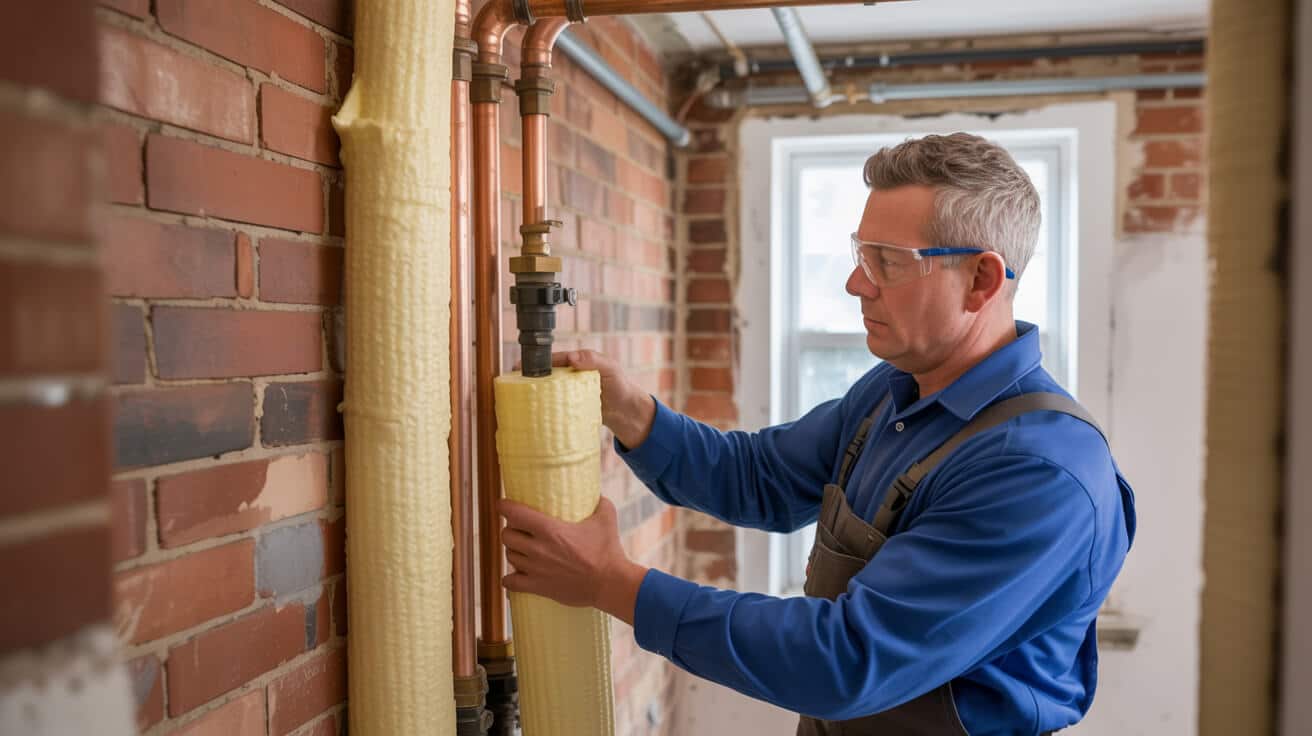
Knowing typical market rates, not just sales pitches, arms you for intelligent negotiation—either on your own home or across a multi-property portfolio. The following table, built from recent UK projects, offers benchmarks:
Typical Cost Table for New Central Heating (Installed, Certified, and Documented):
| Property Type | Typical Cost Range | Standard Inclusions |
|---|---|---|
| 1–2 Bed Flat | £3,500–£4,500 | Combi boiler, 6 radiators, programmer/controls |
| 3–4 Bed Semi/Detached | £4,500–£7,000 | System/combi, 8–12 rads, smart controls, cylinder |
| Landlord/Rental Property | £4,000–£6,500 | CP12, checklists, rapid cert handover |
| Light Commercial/SME | £7,000–£12,000+ | Zoned boilers, multiple radiators, compliance pack |
Extra features—solar integration, high-output radiators, or advanced zoning—expand the top end. Large multi-property installations may deliver savings due to scale.
Expect a detailed scope and delivery plan for every project. The cheapest invoice tells you little; a transparent one with breakdowns, schedules, and certainty at every step is the real asset.
What Happens After Installation? Handover, Certification, and Ongoing Value
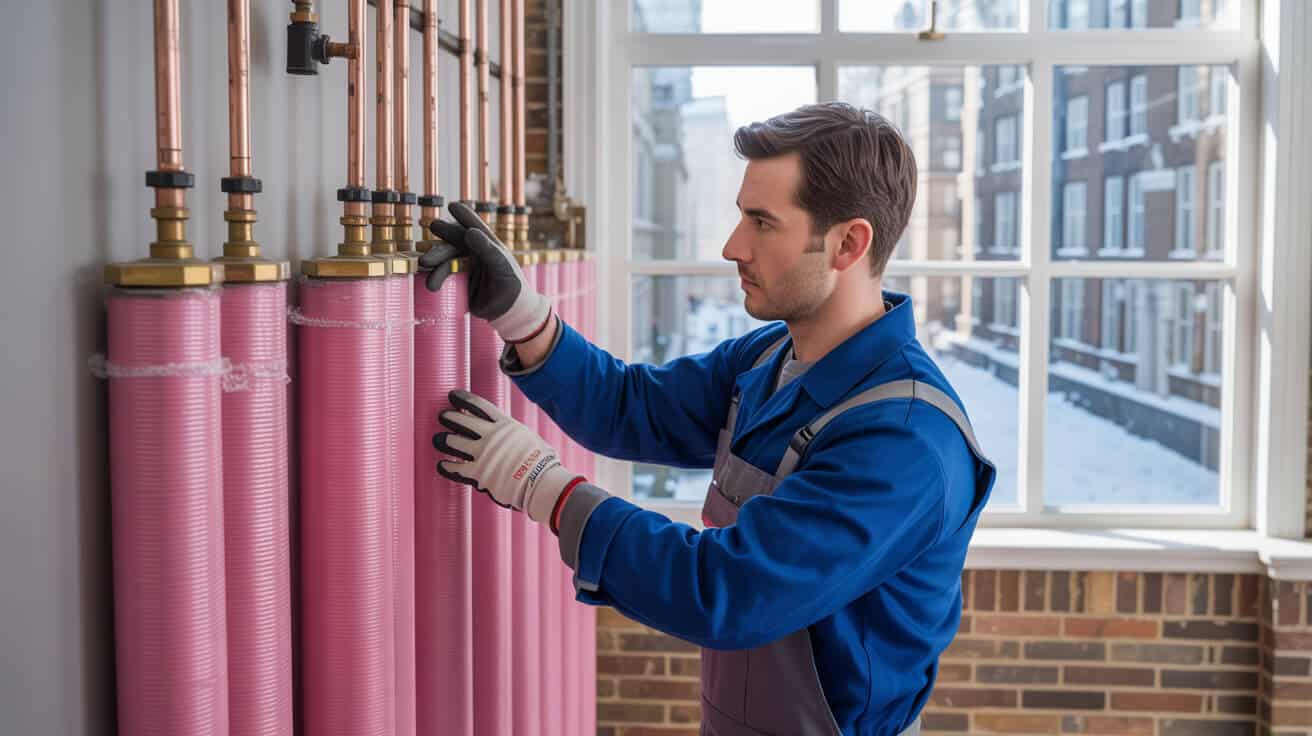
Completion means more than a warm house. Until you have a working system, full paperwork, and clear aftercare, your asset isn’t protected—nor are your tenants, insurers, or next buyers.
The Professional Handover Sequence
- All appliances tested: each radiator bled, balanced, and checked for flow.
- User demonstration: walk-through of controls, filling loops, pressurisation steps, and app/smart integration if fitted.
- Handover pack: digital+hardcopy Gas Safe and G3 certificates, Building Control approval docs, manufacturer/installer logbooks.
- Support: dedicated number for emergencies and future queries.
Landlords/agents—insist on an asset registry (date, serial number, service intervals) for compliance audits and easy risk management.
Maintenance and Ongoing Value
- Annual reminders: Your installer should trigger service reminders automatically—nothing falls through the cracks.
- Warranty activation: All hardware registered on your behalf; instal records securely logged for transfer or future claims.
- Emergency lines: Clear, always-answered contacts for breakdowns or urgent questions.
- Ongoing compliance monitoring: Especially powerful when scaling a buy-to-let or SME property operation.
The best installers leave you with peace of mind and a documented chain you can prove and transfer—not just a heating system.
Why Do Informed Owners and Landlords Choose Plumbers 4U?
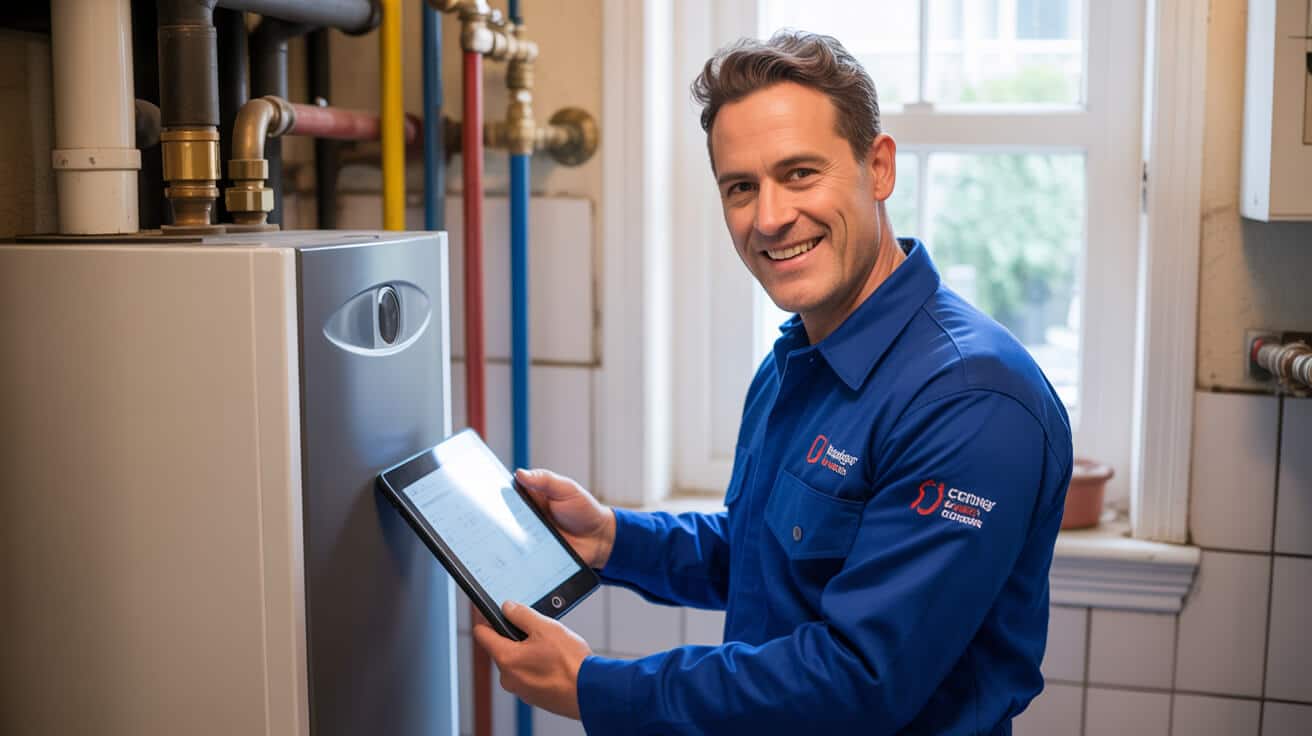
Choosing Plumbers 4U isn’t just trading money for warmth—it’s about future-proofing your property, brand, and reputation in the long run. When every decision is visible, documented, and defensible, you can navigate audits, warranty claims, tenant complaints, or sales negotiations from a position of absolute strength.
Features That Set Plumbers 4U Apart
- Quote transparency: Every part, every hour, every contingency spelled out; no vague wording or “TBC” components.
- Legal compliance as standard: All Gas Safe, G3, WaterSafe, and Building Control paperwork included and explained.
- Complete handover: User guides, in-person demo, and digital/video how-tos ensure no knowledge gaps.
- Digital and physical records: All certificates and logs supplied for surveys, audits, and insurance upgrades—never misplaced in a “paperwork shuffle.”
- Asset and risk defence: Custom evidence packs for landlords and frequent CP12/asset registers for managers, including direct insurer/solicitor communication if needed (critical for portfolios or commercial property holders).
You’re not just buying warmth, you’re deploying a shield for your reputation, compliance score, and future resale. No more chasing documentation or worrying about tomorrow’s audit or tenant query. With Plumbers 4U, you’re always ready to prove and protect your investment.
Request Trusted Central Heating Advice from Plumbers 4U Today
Every heating decision shapes what your property is worth, how it’s perceived, and how future-proof your compliance chain becomes. Don’t let quick fixes, vague paperwork, or ambiguous quotes stealthily erode your investment.
With Plumbers 4U, you gain:
- certified engineers (Gas Safe, G3, WaterSafe) on every job
- Forensic quotes with no scope-vague language
- Handover packs that don’t just tick boxes, but put you in control
- Aftercare and support that’s as robust in December as it is in July
Smart property investment is measured by peace of mind, not just pounds saved on the invoice.
Whether you’re planning your first instal or managing a portfolio, let us walk you through a bespoke heating solution that’s transparent, compliant, and future-ready. Reach out for your tailored quote, confidently backed by Plumbers 4U’s compliance pedigree and commitment to hassle-free property ownership.
Frequently Asked Questions
What drives major cost differences in UK central heating instals—and how can you control your final quote?
Central heating instal prices aren’t just a boiler or radiator tally—they reflect the hidden journey from home survey right through to the handover paperwork. Your property’s shape, system age, number of wet zones, and local compliance rules can make the difference between a predictable quote and a snowballing bill. Average UK figures cluster between £3,500 and £7,000 for standard homes, but reach five-figure territory if you’re upgrading period houses, open-plan extensions, or anything with complication under the flooring.
It’s not only square footing or the number of radiators that swing the cost. Controls (wired wall stat or smart zoning), heat loss calculations for tricky rooms, and whether the job needs listed-building care are all “cost levers.” Survey detail matters: concealed or mixed-age pipes, patchwork legacy instals, and hard-to-reach risers add labour hours fast. Regional demand raises prices—London and southern counties can carry a 20% load over national medians due to both skilled labour and limited access.
What you discover during the survey, not what’s quoted up front, shapes the real invoice.
Installation to full compliance (Gas Safe for all gas works, G3 for unvented cylinders, WRAS for potable connections) is essential for legal protection and asset value. Look for detailed, line-by-line breakdowns—Plumbers 4U’s quotes specify property quirks and compliance steps up front, shielding you from the “grey area” bolt-ons that sting after the fitters arrive.
Four cost levers to control:
- System type and zoning: Combi vs. system boiler, multi-zone stats, and smart controls all have ripple effects.
- Labour and compliance: Hidden pipes and reinforcement for cylinder instals hike both cost and complexity.
- Component quality: Branded ErP A-rated items save future running costs but alter upfront outlay.
- Finishing work: Floor reinstatement, paintwork, and aftermath repairs are often left hazy—clarify scope early.
For predictable budgeting, request digital cost logs, ask for exclusions in writing, and have the entire spec itemised before you sign off. Plumbers 4U’s process benchmarks each stage, making costs—and compliance—fully visible before a wrench is lifted.
Which hidden extras and small print most inflate final heating bills—and how do you shield yourself?
The headline price for heating instals regularly skims over a stack of costly “unknowns.” The simplest pitfall is pipe rerouting: legacy homes with boxed-in pipes, screen floors, or odd routing will almost always spring surprise access and repair charges, often running £500–£2,000 above initial expectations. Missed “powerflush” or chemical dosing invites warranty trouble—many installers only bring it up after the fact, triggering urgent upcharges.
Upgrade expectations are another friction point. Basic stats may be standard, but if you want full-room zoning or to run everything from an app, costs can balloon by £200–£600, often left unitemised or waved through as “optional” rather than priced. Removal of old tanks, lagged pipework, or unsafe legacy materials comes with real disposal and compliance costs. Many quotes label this work as “as found”—insist it’s scoped in black and white.
Vague exclusions and ‘subject to survey’ clauses are where 90% of final invoice stress starts. Details in writing block nasty aftershocks.
Ask up front if all certificates (Gas Safe, G3 unvented, WaterSafe, EPC for landlords) are not just issued, but guaranteed handed over digitally. Plumbers 4U bakes these inclusions into its survey and quoting process—issuing you a photo-stamped digital log and asset record after the job.
Guardrail checklist for surprise extras:
- Is explicit pipe rerouting costed?
- Is powerflush/chemical dosing a standard line item?
- Do quoted controls and TRVs carry make/model, not just “upgrade available”?
- Is old system removal/remediation costed or marked as “TBC”?
- Are post-job finishes (floor, paintwork, testing) covered?
- Is every required certification named, with logbook included?
Bringing these elements out of the small print puts you in charge and makes the installer truly accountable for the final price.
What proves a heating engineer’s credentials are truly protecting you—and why does it go beyond paperwork?
Credentials aren’t paperwork for its own sake—they’re your legal and financial firewall against poor instals, invalid insurance, and hard stops in any property sale. A Gas Safe card (matching both engineer and company) is the minimum gatekeeper for all gas works. G3 certification is non-negotiable for unvented cylinders, and WRAS or WaterSafe is your shield on potable water installations and conversions.
Modern best practice is digital verification: demand a live check on the Gas Safe Register, and digital G3/WRAS certificates cross-checked to your instal. Landlords and letting agents who keep digital logs (CP12 Gas Safety, EPCs, water logs, asset numbers) avoid nasty shocks during compliance spot checks or buy-to-let sales.
If an installer won’t show credentials, walk away—good practitioners are proud of their certs and ready to prove them, not just flash a badge.
Plumbers 4U provides all regulatory documents as part of the completion log, so hassle is removed whether you’re a resident, manager, or property portfolio owner.
Pre-instal credential checklist:
- Gas Safe engineer and business IDs—checked online, not just shown:
- G3 paperwork for any unvented cylinder or hot water system:
- WRAS/WaterSafe proof for pipework (new builds, conversions, blocks):
- CP12 and EPC logs for rentals, sales, or insurance:
The absence of any of these can mean blocked sales, uninsurable workmanship, or legal liability. Make digital delivery part of the contract—not a handshake promise.
Why does a comprehensive, compliance-led quote matter for heating installations?
A reliable heating quote is more than a cost—it’s a safeguard for comfort, safety, and future-proofed asset value. Detailed breakdowns list every boiler model, cylinder, radiator, TRV, and control type—including make and energy rating. True proposals go further: splitting material from labour, explicitly naming powerflush, and scheduling routine test and service windows. No line item? No guarantee it’s really being provided or covered.
A scope-of-works isn’t just project admin—it’s your best defence against legal or sales obstacles years from now.
Quotes should state the warranty and compliance path, documenting what qualifies, what’s retained, and what triggers loss. “As found” or “if needed” soft language is a red flag; explicit inclusions are your firewall.
Table: Core elements that make a quote legal and future-ready
| Element | Must Be Included in Real Quote | Why It Matters |
|---|---|---|
| Boiler/cylinder/valve TRV | Part numbers and ErP rated make/model | Enforces efficiency and warranty |
| Powerflush/dosing | Itemised, scheduled, not just “advice” | Maintains system health, warranty |
| Controls and stats | Make/model, smart/app, zone map in detail | Comfort and value for years |
| Labour/material split | Transparent, accessible for grant/tax paperwork | Blocks “extras” creep |
| Compliance docs | Installation schedule and logbook log | Legal, asset value, insurance |
| Post-job finishing | Painting, floor reinstatement, cleanup listed | Avoids landlord/tenant disputes |
Plumbers 4U issues and tracks all of these steps with digital completeness, meaning every heating project becomes a predictable business asset, not just a project expense.
How do UK grants, eco-schemes, and compliance offer real cost reductions—and how is eligibility secured?
Thousands of UK homes now claim substantial cost reductions using government incentives and compliance-linked grants. The Boiler Upgrade Scheme pays up to £7,500 for qualifying heat pumps or biomass systems, conditional on MCS and TrustMark installer status, as well as thorough EPC and asset documentation. For vulnerable, lower-EPC, or means-tested families, the ECO4 scheme means insulation and heating upgrades are accessible with little or no upfront cost.
0% VAT applies through March 2027 on principal works, and landlords can synchronise upgrades for MEES and EPC compliance to avoid fines and future letting barriers. Experience shows the grant process only succeeds when the installer handles all registration and audit steps—skipped documentation is the number one cause of missed subsidies.
Eligibility is wasted unless your installer manages compliance and digital paperwork from day one—if they don’t, you may forfeit thousands.
Plumbers 4U provides eligibility screening at home survey, bakes every grant or VAT discount into the first quote, and delivers the paperwork needed for audit backups or future property events.
Grant unlock checklist:
- Property with EPC “D” or below and/or council tax A–D band:
- Installer must be MCS and TrustMark (heat pumps), Gas Safe and WRAS (gas/water):
- Digital handover docs for audit, letting, or asset sale:
- Ask for eligibility check when surveying for new heating or upgrades:
Landlords and managers should also check that all compliance logs (MEES, CP12, EPC, WaterSafe) are cross-linked to maximise both grant success and future audit speed.
Why does investing in contracted-aftercare, skilled labour, and 360° compliance outperform a “just get it done” approach?
Heating investment is rarely just about heat—you’re securing insurance, asset value, day-to-day comfort, and future flexibility. Labour absorbs half or more of the cost—£27–£100 per hour is the new norm—and the difference between a smooth instal and future legal issues rests on genuine certificates and serviced documentation. The most reliable firms deliver a digital logbook, asset photos, and instant access to all paperwork upon job sign-off.
You don’t pay for ‘heat in the pipes’—you’re buying time, peace, and options for every sale, tenancy, or repair that comes after.
Aftercare matters most for larger homes, family houses with complex zone controls, landlords with property chains, or any business/office needing asset compliance. The best providers schedule future service, test certificates, and asset logs into your handover.
Table: How property type drives aftercare and compliance needs
| Property Type | Budget Range (£) | Unique Aftercare/Compliance Need |
|---|---|---|
| 1–2 bed Flat | 3,500–4,500 | Simple handovers, speedy digital paperwork |
| 3–4 bed Family Home | 4,500–7,000 | Multi-zone logs, regular asset checks |
| Landlord/Portfolio | 4,000–6,500 | Compliance asset logs, fast CP12/EPC |
| Small Comm./Office | 7,000–12,000+ | Multi-zone, insurance, digital user logs |
From tenanted properties to first homes, providers like Plumbers 4U build value by making admin, compliance, support, and asset security a seamless part of the installation. Your heating system becomes a business asset, not just a winter bill.
Every heating job is really a test of foresight: project-managed compliance, digital handovers, and trusted aftercare from Plumbers 4U won’t just heat your home—they safeguard your comfort and property value for years to come.
